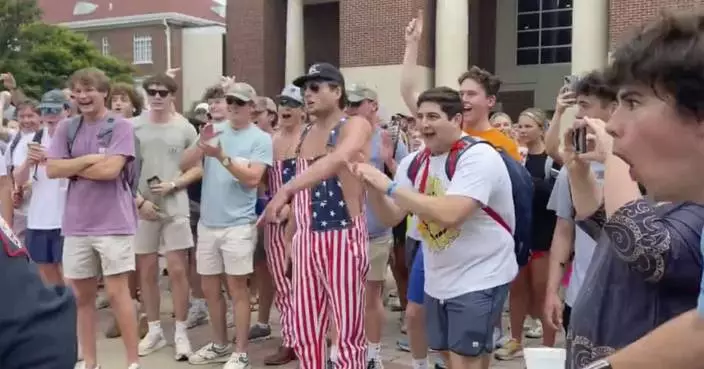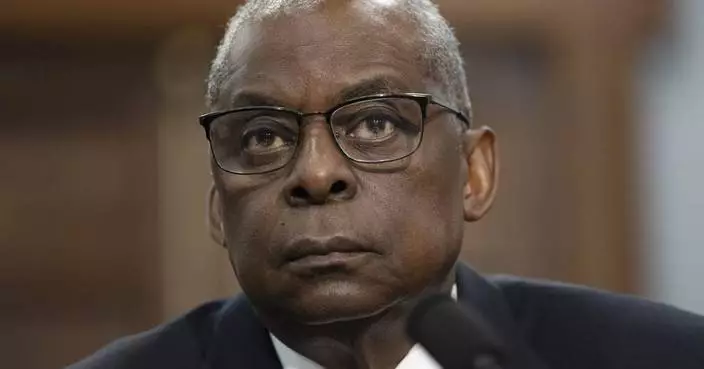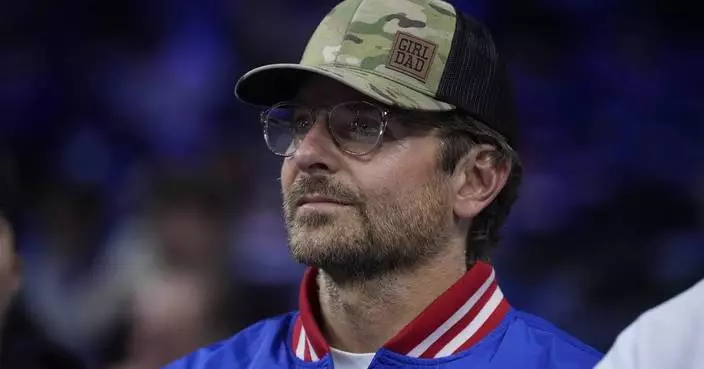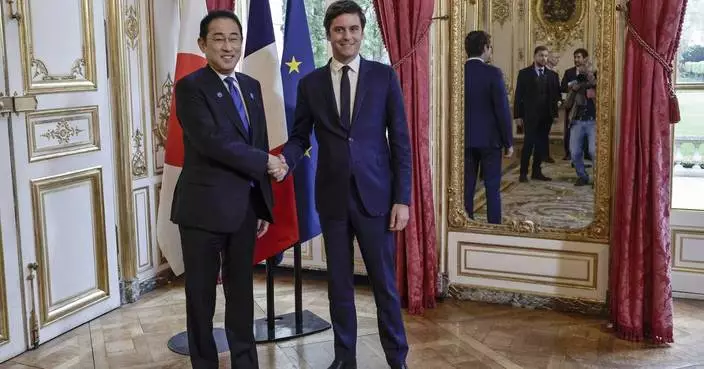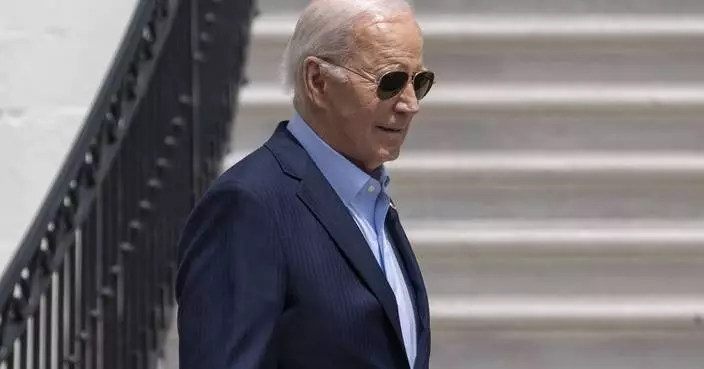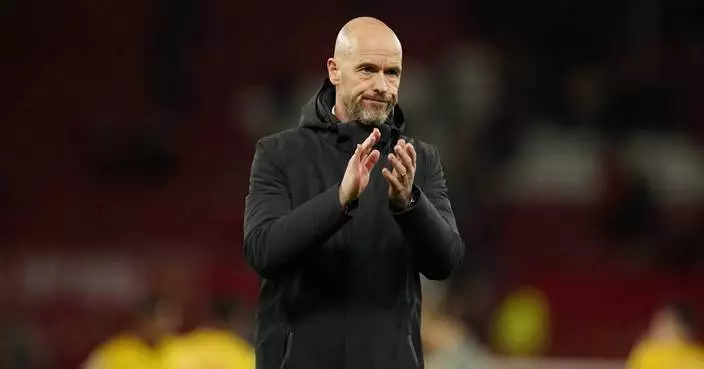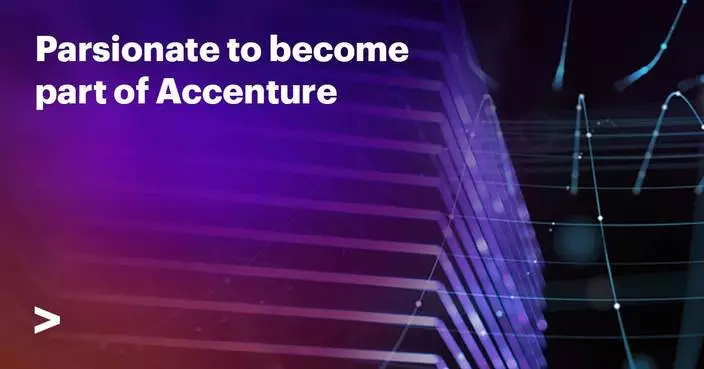More than two decades after poison gas attacks in Tokyo's subways killed 13, the stage has shifted to the execution of 13 people convicted in the crime. When they will be sent to the gallows, though, remains a mystery in Japan's highly secretive death penalty system.
The Supreme Court rejected an appeal in the final case last week, so the condemned are no longer needed as potential trial witnesses. The court upheld a life sentence for Katsuya Takahashi, a driver in the attack who was convicted of murder in 2015. He was a follower of the Aum Shinrikyo cult that carried out the attack.

FILE - In this Sept. 25, 1995, file photo, cult leader Shoko Asahara, center, sits in a police van following an interrogation in Tokyo. More than two decades after poison gas attacks in Tokyo’s subways killed 13 people, the stage has shifted to the execution of the 13 major perpetrators. (Kyodo News via AP, File)
"The end of the trials, which took so long, is a fresh reminder of the horror of all the crimes committed by Aum," Shizue Takahashi, the wife of a subway stationmaster who died in the attack, told reporters Friday. "Now the focus for the families of the victims and other people will shift to the executions."
Shoko Asahara, the guru of Aum Shinrikyo, and 12 others have been sentenced to death. Whether any will be hanged this year is unknown. Japan generally announces executions only after they have happened.
Cult members released sarin nerve gas in subway cars during the morning rush hour in March 1995, sending people fleeing to the streets and sickening more than 6,000. First-aid stations were set up in tents, and military troops in gas masks and hazmat suits were sent in. The scenes shocked a country where the crime rate is relatively low and people usually take their personal safety for granted.

FILE - In this June 15, 2012, file photo, Katsuya Takahashi, center, a former Aum Shinrikyo cult member, is driven to Tokyo Metropolitan Police Department after being arrested, in Tokyo. (Kyodo News via AP, File)
"We should remember that it was not a crime by a group of weird young people, but it showed that anyone could be an assailant," said Shoko Egawa, a journalist who covered the cult's criminal activities from early on.
The attack was intended to disrupt a police investigation into the group, which had already been suspected of other illegal activities. The cult had amassed an arsenal of chemical, biological and conventional weapons in anticipation of an apocalyptic showdown with the government.
Cult guru Asahara, whose real name is Chizuo Matsumoto, was captured two months after the attack. His round face framed by wavy long hair and a scraggly beard, he rarely spoke during an eight-year trial, except for occasional incoherent remarks in English at the start. Now 62 years old, he has been on death row for nearly 14 years since being sentenced in 2004.
Aum Shinrikyo, which means Supreme Truth, once claimed 10,000 members in Japan and 30,000 in Russia. It has disbanded, though about 2,000 believers follow its rituals in two splinter groups. Authorities continue to monitor them.
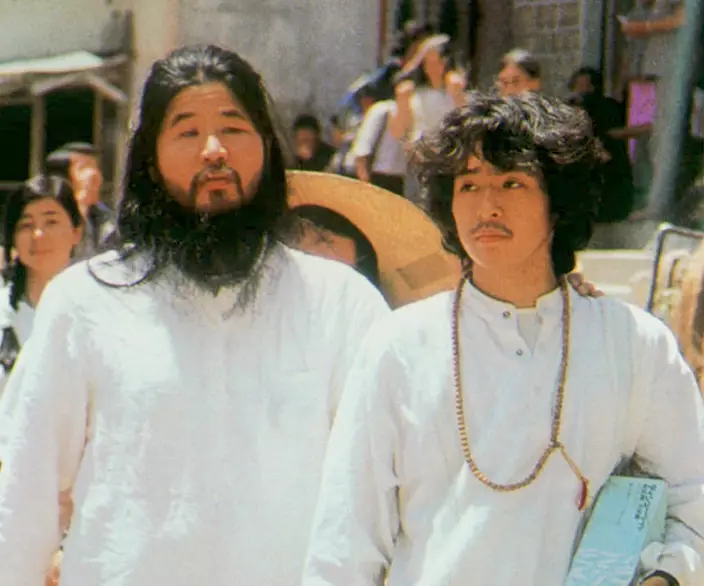
FILE - In this undated file photo, cult guru Shoko Asahara, left, of Aum Shinrikyo walks with Yoshihiro Inoue, then a close aid, in Tokyo. (Kyodo News via AP, File)
Of the 122 people on death row in Japan, more than 90 are appealing their sentences. Retrials are rarely granted, and filing an appeal does not protect one from the gallows. Four people were executed last year.
In 2016, the Japan Federation of Bar Associations called on the government to abolish executions by 2020, when Japan hosts the Summer Olympics. Japan and the U.S. are the only G-7 countries that maintain the death penalty. Last year, Mongolia became the 105th nation to end the practice, according to Amnesty International.
SAO PAULO (AP) — Brazil's President Luiz Inácio Lula da Silva on Friday welcomed Japan's Prime Minister Fumio Kishida on his first visit to the country, with the two meeting in the capital of Brasilia and the South American leader pushing his counterpart to buy his country's beef.
Brazil had wished to seize on the bilateral meeting to push forward an agreement to open Japanese markets to Brazilian beef, a goal the Latin American country has pursued since 2005. In an appeal to the prime minister, Lula insisted he should eat at a steakhouse during his trip.
“I don’t know what you had for dinner last night,” Lula said during the press conference, looking at Kishida and the Japanese delegation, then turning his attention to Vice President Geraldo Alckmin, who is also Minister of Industry, Commerce, Development and Trade. “Please, take Prime Minister Fumio to eat steak at the best restaurant in Sao Paulo so that, the following week, he starts importing our beef.”
Under Lula, Brazil has boosted efforts to export beef to international markets. Since the beginning of 2023 when Lula took office, 50 countries have lifted restrictions, mostly in Asia. According to Brazilian officials, about 70% of the beef consumed in Japan is imported, while 80% of the imports come from the U.S. and Australia.
“Our meat is cheaper and of better quality than the meat you buy. I don’t even know the price, but I’m sure ours is cheaper, and of extreme quality,” Lula added.
Brazil exported more than 2 million pounds of beef in 2023, barely breaking the record set the prior year, according to official trade data. The nation is the world's largest beef exporter, shipping to over 90 countries. The sanitary conditions of the cattle industry are now “much better than in 2005, particularly regarding recognition of areas free from foot-and-mouth disease without vaccination,” Eduardo Paes Saboia, the secretary for Asia and Pacific at Brazil’s foreign affairs ministry, told reporters in Brasilia.
The cattle industry is also a major driver of the destruction of the Amazon rainforest and the Cerrado, a vast tropical savanna region. Japan and Brazil agreed to Japanese support for restoration initiatives of the Cerrado’s degraded areas. Additional cooperation agreements pertained to cooperation in cybersecurity and investment promotion, among other areas.
“There is great potential in bilateral cooperation to address global challenges,” Kishida said at a press conference after their bilateral meeting.
He added that he expected to enhance Japanese and Brazilian cooperation in environmental protection measures, climate change and sustainable development, mentioning his country's recent $3 million contribution to the Brazilian government’s fund to protect the Amazon rainforest. He also noted that 150 Japanese executives had joined him on the trip.
Kishida's first words to Lula, according to the Brazilian president, were to express solidarity with the victims of the floods in the southern state of Rio Grande do Sul that have killed 37 people as of Friday morning, with dozens more still missing.
Brazil is home to the world’s largest Japanese community outside Japan, with over 2.7 million Japanese citizens and their descendants. The first ships from the Asian country arrived to Brazil in 1908, and immigration peaked between World War I and II.
Prime Minister Kishida will travel to Asuncion, Paraguay in the afternoon to attend a business summit, meet the Japanese community and have dinner with President Santiago Peña. On Saturday morning, he is expected to fly back to Brazil to meet the Japanese community in Sao Paulo, deliver a speech at the University of Sao Paulo and attend a business meeting.
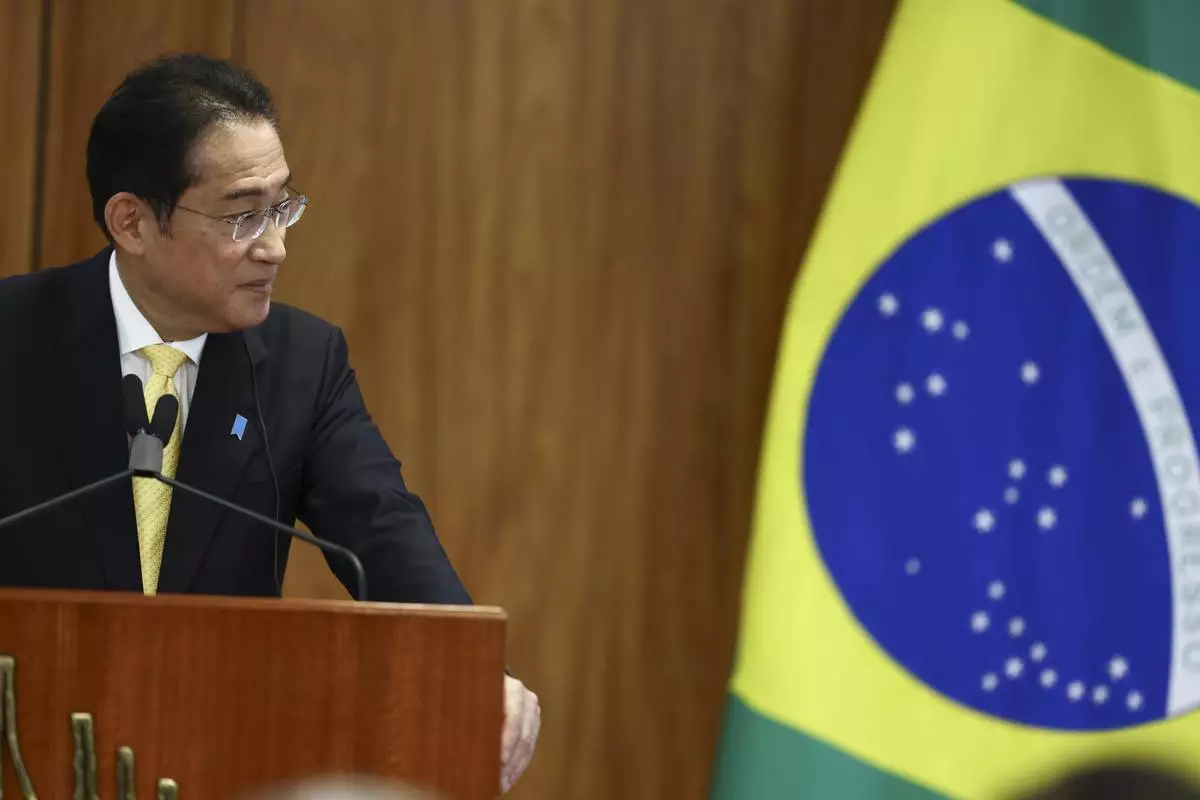
Japan's Prime Minister Fumio Kishida gives a joint statement with Brazilian President Luiz Inacio Lula da Silva at Planalto presidential palace in Brasilia, Brazil, Friday, May 3, 2024. (AP Photo/Luis Nova)

Brazilian President Luiz Inacio Lula da Silva, right, and Japan's Prime Minister Fumio Kishida shake hands during a meeting at Planalto presidential palace in Brasilia, Brazil, Friday, May 3, 2024. (AP Photo/Luis Nova)
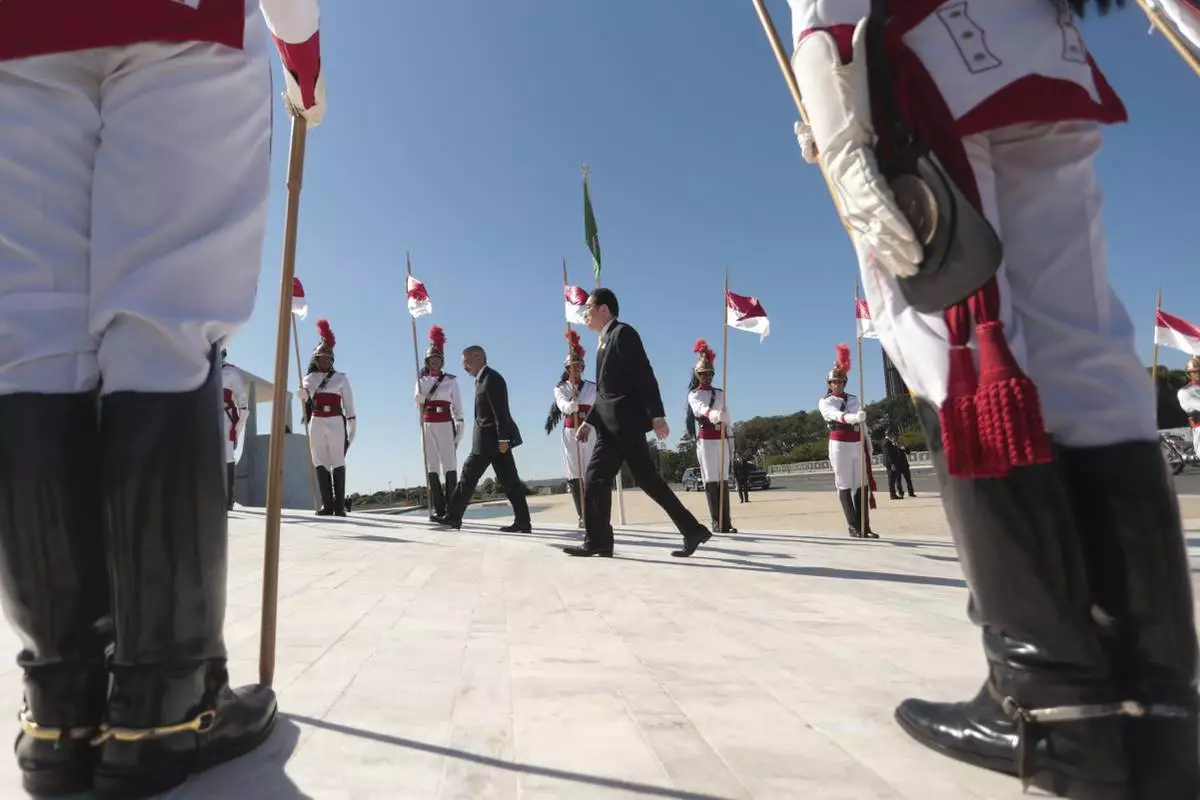
Japan's Prime Minister Fumio Kishida arrives to Planalto presidential palace for a meeting with Brazilian President Luiz Inacio Lula Da Silva in Brasilia, Brazil, Friday, May 3, 2024. (AP Photo/Luis Nova)

Brazil's President Luiz Inacio Lula da Silva, right, and Japan's Prime Minister Fumio Kishida pose for photos at Planalto presidential palace in Brasilia, Brazil, Friday, May 3, 2024. (AP Photo/Luis Nova)
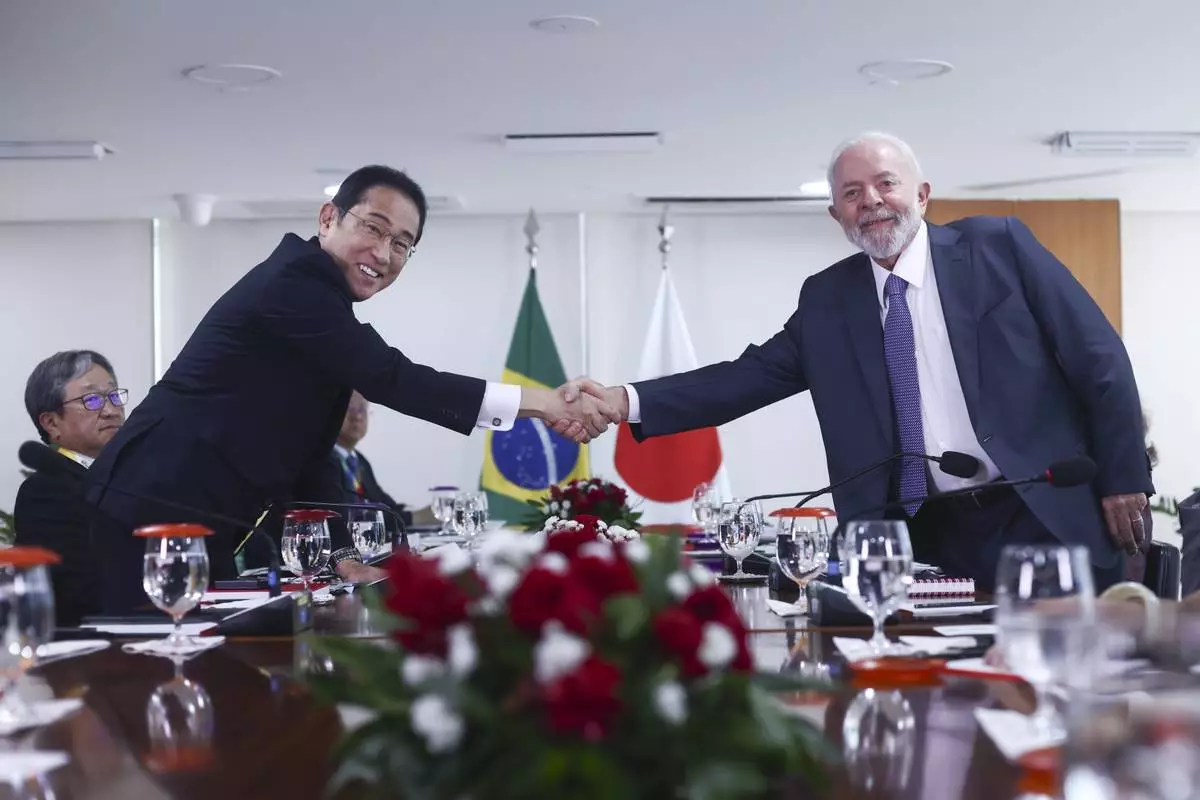
Brazil's President Luiz Inacio Lula da Silva, right, and Japan's Prime Minister Fumio Kishida shake hands for the media during a meeting at Planalto presidential palace in Brasilia, Brazil, Friday, May 3, 2024. (AP Photo/Luis Nova)











